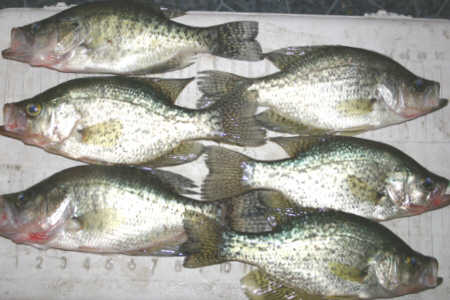Fertilization of agricultural fields in the alluvial fan of the Nile in addition to sewage discharges increase the fish stocks near the shores of the Mediterranean Sea

A new study is published in the journal Proceedings of the National Academy of Sciences. Engaged in fishing in coastal waters in Egypt states that: "Fertilization of agricultural fields in the alluvial fan of the Nile in addition to sewage discharges increase the fish stocks near the shores of the Mediterranean Sea".
A team of researchers found that the significant increase in fish populations coincides with the increase in the use of fertilizers by farmers. About 60% of the fishermen in the supported area are fed by culverts that flow into the Nile water. More than 95% of the Egyptian population and almost all agriculture is concentrated in about 5% of the country's territory, some on the river bank and the majority in the alluvial fan that embraces about 25.000 square kilometers.
For more than 5000 years the Egyptians depended on the seasonal flooding of the Nile. Seasonal rains in East Africa raise the water level and cause floods, floods that watered and fertilized the plains on the banks of the river, watered of course with water, fertilized with silt rich in organic materials. At the end of the road, the Nile forms the huge alluvial fan and spills into the sea.
Already at the beginning of the 19th century, the population of Egypt was greater than its capacity to produce food, an increase that later was one of the reasons for the decision to dam the Nile to control flooding and flow. The dam made it possible to divert water to new growing areas that were until deserts/completely dry.
When the great dam was built in Aswan, flooding was reduced by 90%. In addition to generating electricity, the dam allowed water to be diverted to new agricultural areas and the three growing seasons, from one growing cycle per year to three. More growing cycles, more areas, more produce / food. But the damming of the river stopped the transport of silt to the plains, silt that contained organic materials - that is, nutrients. Fewer nutrients in the fields where three growing cycles are grown (in one place), so of course less nutrients reached the Mediterranean Sea, the result was immediate: a sharp drop in fish populations, the Egyptian fishermen (and their neighbors) caught less and less fish.
At the end of 1980 there was a surprising recovery, the fishermen caught more and more fish, today (the research period - 2006 - 2007) Egyptian fishermen take out quantities of fish that are three times larger than the quantities caught before the construction of the dam. It is clear that the large quantities can also be attributed to improved fishing methods and more fishing boats, but according to the researchers, only a small part of the sharp increase in the amount of fish can be attributed to this.
A contemporary assessment of possible food sources that exist because of human activity, shows that: the amount of nutrients (in the sea) as a result of human activity is much greater than what was carried by the flood waters in the Nile.
Since the construction of the dam, the population of Egypt has doubled and accordingly (more than a third) the consumption of food has increased, to satisfy the demand the farmers will increase the use of fertilizers fourfold. The increased use of fertilizers in Egypt's fields caused fertilizers to be "washed" into the sea, and thus the Egyptian farmers are unintentionally fertilizing the Mediterranean Sea. When you add to that the population explosion that causes raw sewage to be discharged into the sea, you get an ever-increasing amount of fertilizers and nutrients.
During the research period, the researchers examined hundreds of fish and it became clear that the fish feed on algae and plankton that grow in waters rich in food products that are the products of human activity. A finding that led the researchers to understand that there is a correlation between human activity and the increase in the amount of fish.
It is accepted all over the world that the discharge of sewage and fertilizers into water bodies causes damage, the extreme examples of "dead zones" that develop due to algae "blooms", toxic algae that develop due to an excess of nutrients in the water, algae blooms cause a lack of oxygen in the water, lack of oxygen equals dead zones are known. It turns out that "in the Egyptian case" the result of "fertilization" is positive: the production of large quantities of fish that make it possible to feed a growing population. However, before receiving definitive and unequivocal conclusions, it is worth checking how sustainable "artificial feeding" will be and what the results will be over time.
There are preliminary signs that show that a constant increase in the amount of nutrients in the water will contribute to overfishing to the point where there will be a sharp drop due to serious damage to the water quality and eventually overfishing.
How does all this affect fishing on our shores? I didn't see a reference to this in the study, but the distance of our coasts from the Nile's alluvial fan is small, the direction of the currents is northward, (our coasts receive sand from the Nile), so it can be assumed that the same processes will also affect the fishing on our coasts.

2 תגובות
Maybe this is what is needed to solve places where there is overfishing..
This means that we owe a long-term plan, but in a global context, breaking down the problems on the scale of countries simply does not allow solving the problems of the environment...
I am calling for the establishment of an environmental quality council .. next to the UN Security Council ..
Umm chaos, but only with such a focus will it be possible to deal with all points in a balanced way..